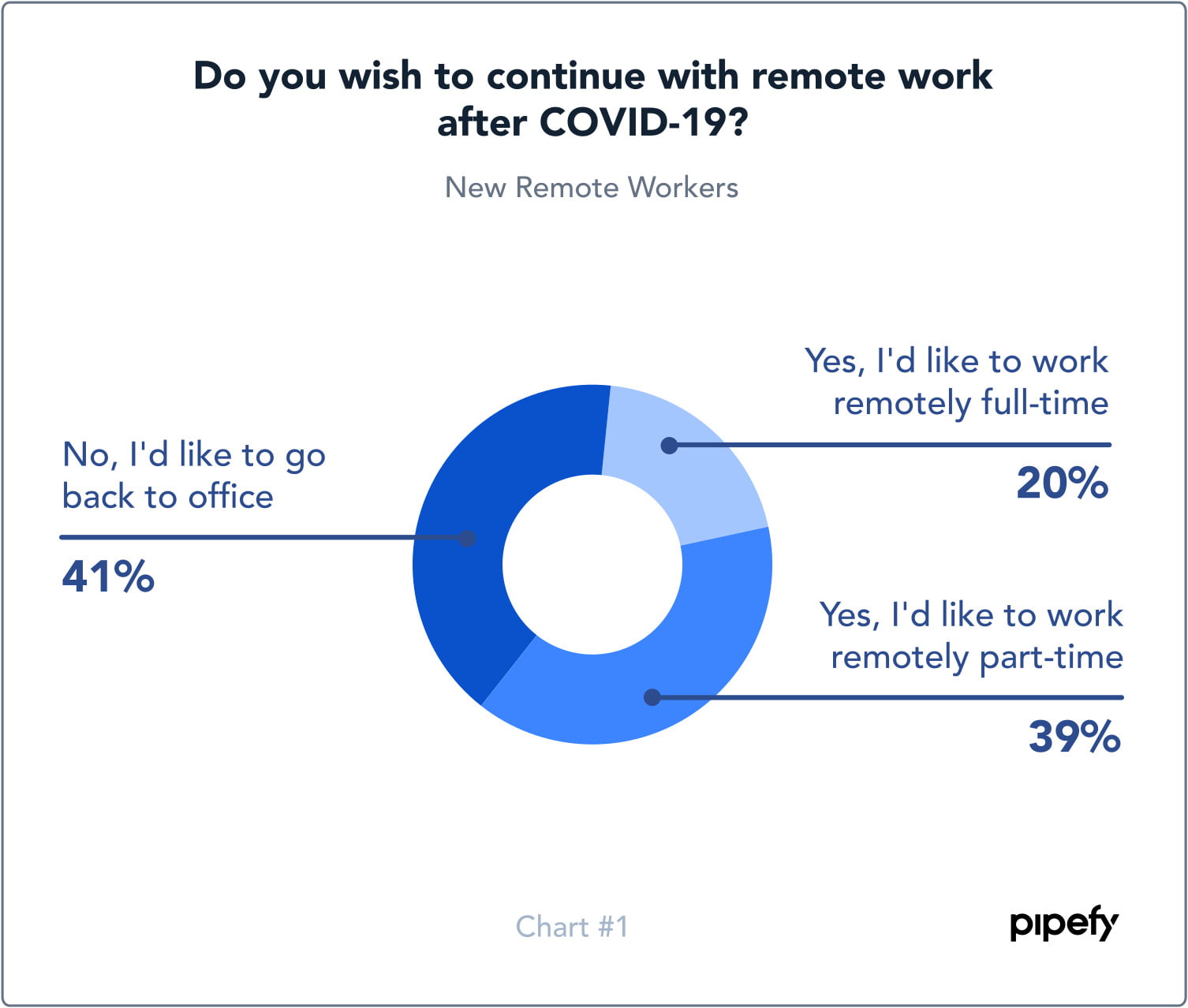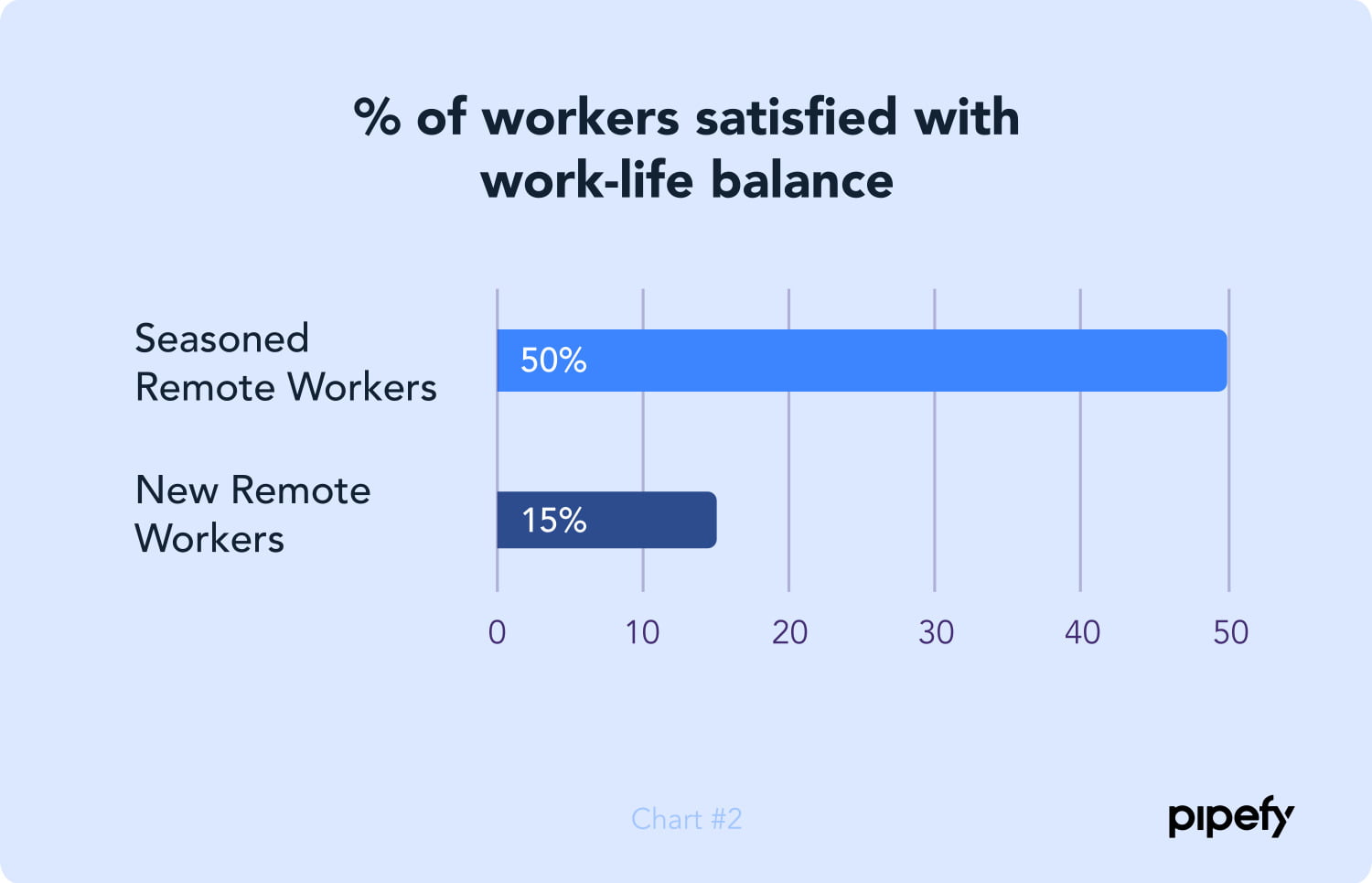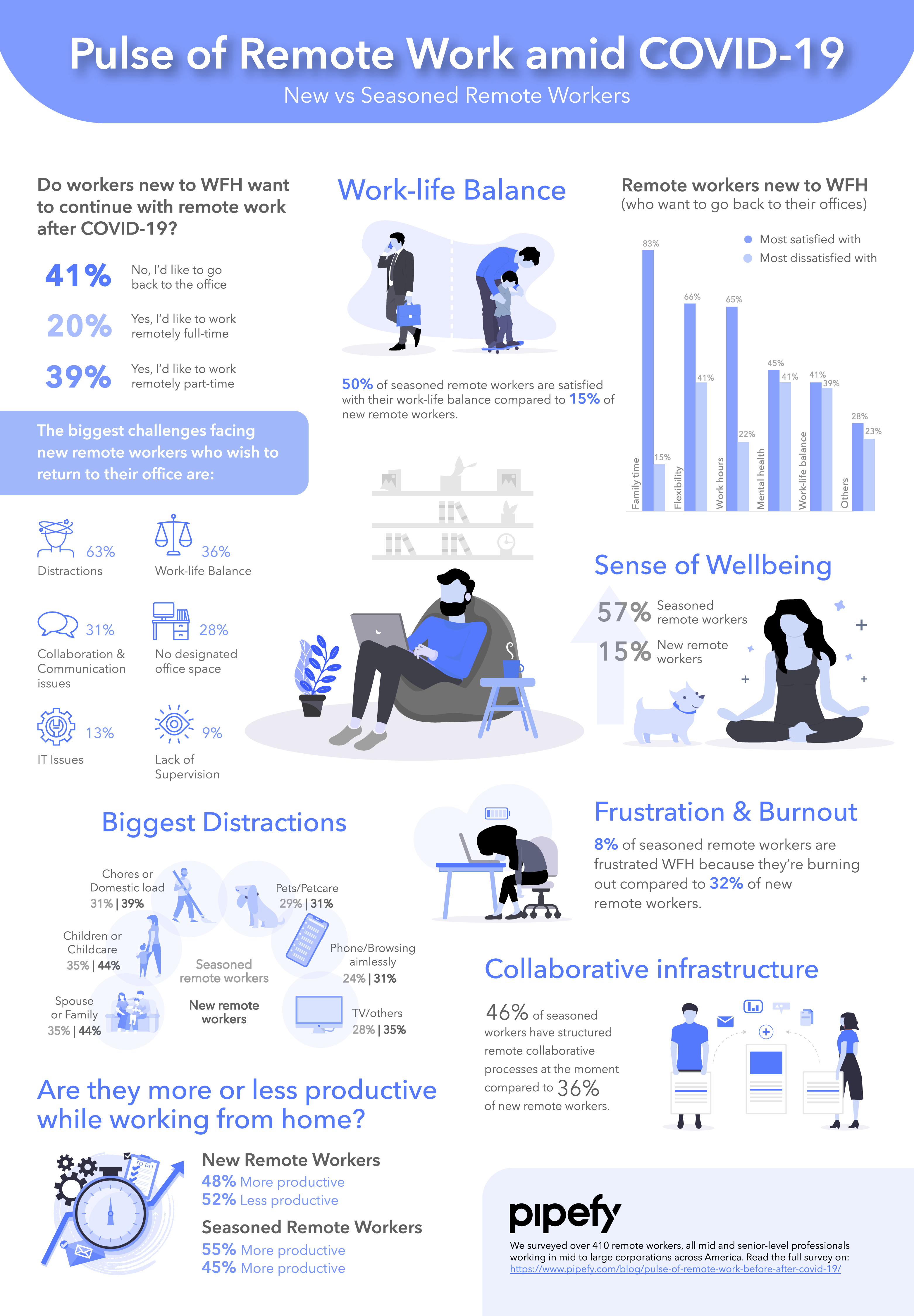
Remote working conditions during COVID-19: Seasoned vs. New Remote Workers
COVID-19 has caused significant shifts across the world, changing a variety of traditional concepts. While some of these changes were predictable, some remain hard to fathom. One of the biggest changes, however, is the current social distancing norm, forcing businesses to move from traditional forms of work setups to remote working.
Q1 2020 hedge fund letters, conferences and more
Seasoned vs. New Remote Workers
Taking these changing scenarios into consideration, Pipefy conducted a survey on over 410 fulltime workers, across the US. Among the entire population, 66 percent of workers were new to remote working, that is, after the recent lockdown due to the coronavirus pandemic. Whereas, 14 percent of them were seasoned part-time remote workers and only 20 percent were seasoned full-time remote workers.
When we asked the new remote workers if they wished to continue working from home, a majority, that is, 41 percent of them stated that they wish to return to their offices after the lockdown ends. Only 20 percent of the new remote workers stated that they would like to continue with remote work full time, while 39 percent would like to work remotely part-time.
In an attempt to understand why they felt the way they do, we asked them a few questions, and in doing so, only 15 percent of them stated that they were satisfied with their work-life balance. In comparison, almost 50 percent of full-time remote workers stated that they were satisfied with their work-life balance.
We then dug deeper to find out what some of their biggest challenges were, and the survey results show that the segment of new remote workers who wish to return to their offices struggle with distractions. Over 60 percent of these respondents claim distractions to be the biggest challenge, followed by maintaining a work-life balance and collaboration issues.
We tried to understand their satisfaction levels across other areas. When we asked them what they were most satisfied and dissatisfied with, the majority of this segment stated that they were most satisfied with family time, flexibility, and work hours, while they were most dissatisfied with their work-life balance and mental health. In comparison, seasoned remote workers were most satisfied with their mental health and work-life balance, and most dissatisfied with their family time and flexibility – the exact opposite of the former group.
Remote Workers’ State Of Mental Health
We also tried to understand their state of mental health and in doing so, we found that only 15 percent of the new remote workers felt a greater sense of wellbeing after they started working from home, whereas almost 57% of the seasoned workers felt a greater sense of mental wellbeing.
In addition to this, 32 percent of the new remote workers reported frustration and burnout in comparison to only 8 percent of seasoned remote workers who felt the same.
Another common challenge among the new remote workers seems to be the lack of clarity on their day to day priorities. The survey data shows that among the new remote workers who wish to return to their offices, only 40 percent of them had complete clarity on what they are expected to do on a daily basis and the remaining respondents stated that they had partial or zero clarity on their daily priorities. Effective communication is a direct influencer to employee performance, and therefore, this data suggests that the ambiguity in responsibilities may affect their productivity and efficiency.
A Structured Remote Collaborative Process
We tried to uncover their methods of communication and collaboration. To our surprise, only 36% of the new remote workers had a structured remote collaborative process in place, whereas the vast majority of them relied on instant messaging, emails, phone calls or platforms like Google Docs to collaborate.
As far as social life and employee culture are concerned, a majority of new remote workers miss casual conversations and spontaneous work-related conversations during breaks. Additionally, only 25 percent of the respondents among new remote workers stated that their organization had virtual and interactive sessions to keep the bond and culture intact.
The significant gap between seasoned remote workers and new remote workers is striking. It appears that new remote workers may have a few things to learn from full-time seasoned remote workers.
The post Remote working conditions during COVID-19: Seasoned vs. New Remote Workers appeared first on ValueWalk.



